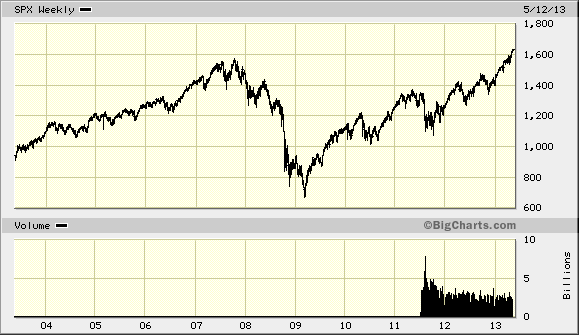Why the Market May Not Have Reached a Bottom Yet
Post on: 29 Июнь, 2015 No Comment

OK, we know we’re in the midst of an unprecedented financial crisis. We know that consumers are cutting back and that the economy is shedding jobs. Almost everyone has lost a decent chunk of change in the stock market, but one question still hasn’t been answered: Has the market reached a bottom yet?
While we’d all like to believe we’ve seen the worst in red ink, there are some indicators that the market hasn’t quite found its footing. Indeed, we may see a few more drops before it stabilizes.
Stormy economic forecast
The biggest obstacle that the stock market faces right now is economic uncertainty. No one knows whether this downturn will be short and shallow, as in 2001, or deep and prolonged, as it was in the early 1980s. Right now, it’s looking more like this will be a deeper, more painful cut into our economy.
The most recent Labor Department report showed our nation’s unemployment rate spiked up to 8.1% — its highest level in 25 years. General Motors. struggling to win government approval for its plan to return to profitability, recently announced its intention to cut more than 10,000 positions from its global workforce. GM is in good company, with Microsoft ( Nasdaq: MSFT ). United Technologies ( NYSE: UTX ). Caterpillar ( NYSE: CAT ). and Sprint Nextel ( NYSE: S ) having also recently announced layoffs.
On other fronts, last fall the ISM manufacturing index fell to its lowest level since 1982, and the service sector has fared little better. The services index, which accounts for roughly 80% of U.S. economic activity, fell to its lowest reading since its creation in 1997. February ISM numbers ticked up slightly from these lows but remain at levels consistent with severe industry contraction. Consumer spending has fallen off a cliff as worried families retrench and prepare for the worst.
The sad truth is that the economy will probably get worse before it gets better. The market has already priced in a recession, but if the economic data continue to disappoint, we could see new lows for stocks.
If S&P 500 earnings fall to $60, as NYU Professor Nouriel Roubini expects they will, and the S&P’s price-to-earnings ratio falls to 10, the index could easily trade for $600. That’s about 15% below today’s prices.
Volatility is king
Another indication that the market shows no sign of settling down soon is the incredible level of volatility we’ve encountered in recent months. The market’s Jekyll-and-Hyde trajectory has left investors breathless, with 700- and 900-point drops and gains in a single session. Individual stocks have been buffeted, too, with names such as ProLogis ( NYSE: PLD ). XL Capital ( NYSE: XL ). and American Capital ( Nasdaq: ACAS ) encountering huge intraday trading spreads throughout January and February, both upward of a 15% 50-day moving average.

While the CBOE Volatility Index — aka the Wall Street fear gauge — is down significantly from its highs in November, it’s still pretty much off the charts. Historically high levels of volatility are a good indication that we haven’t worked the panic out of the market just yet and that further declines may be in the works.
The bright side
So is there any good news in this gigantic mess? Well, our economy undoubtedly faces an uphill climb in 2009. But we’ve learned at least one lesson from history: The stock market typically heads north long before we have solid evidence that the economy is improving. That means that the rebound will probably begin while things still look dark — and that no one will be able to precisely call where the market will bottom. Investors who are waiting for some kind of economic signal are likely to miss out. The only way to be sure you’re in the game when the market starts heading back up is to be in the game now .
Of course, if you’re investing in today’s treacherous waters, you may want to have a little guidance. The Fool’s Champion Funds investment service — which has beaten the market by seven percentage points on average since inception — can show you how to invest with the best talent in the mutual fund industry and beat the market while doing it. You can preview this winning service with your free 30-day trial today.
This article was originally published Jan. 5, 2009. It has been updated.
Amanda Kish heads up the Fool’s Champion Funds newsletter service. At the time of publication, she did not own any of the companies mentioned herein. Microsoft and Sprint Nextel are Inside Value recommendations. American Capital is a former Income Investor selection. Click here to find out more about the Fool’s disclosure policy.














